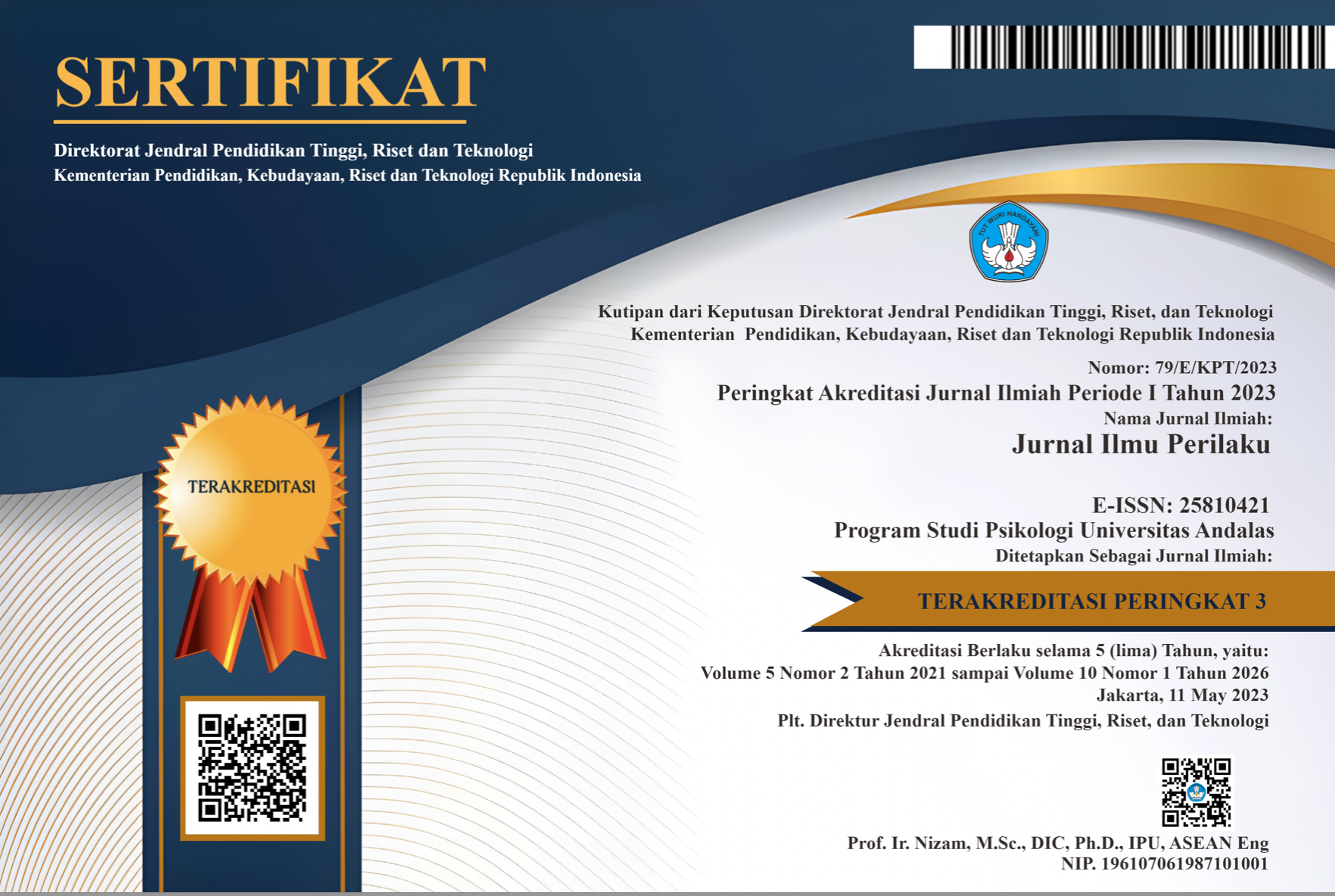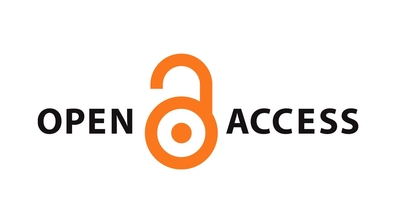Tantangan dan Strategi Kepemimpinan pada Era Virtual di Indonesia
Abstract
Akhir-akhir ini perusahaan/organisasi mengalami tuntutan yang semakin besar untuk mengadopsi sistem kerja virtual. Tuntutan ini tentunya mensyaratkan adanya kebutuhan penyesuaian cara kerja termasuk bagaimana seorang pemimpin menjalankan kepemimpinannya. Hal ini dikarenakan memimpin dalam situasi kerja virtual berpotensi menimbulkan berbagai permasalahan apabila tidak berhasil dikelola dengan baik. Penelitian ini bertujuan untuk mengidentifikasi tantangan-tantangan yang dipersepsikan pemimpin ketika memimpin secara virtual, serta mengeksplorasi beragam strategi yang telah diterapkan pemimpin dalam menghadapi situasi tersebut. Penelitian ini dilakukan dengan menggunakan desain penelitian kualitatif. Sebanyak empat orang pimpinan perusahaan terlibat dalam penelitian ini. Data dikumpulkan melalui proses wawancara dan dianalisis secara tematik. Hasil penelitian mengindikasikan beragam tantangan dalam menjalankan kepemimpinan virtual, meliputi: (1) kesulitan melakukan monitoring pekerjaan; (2) kesulitan dalam menjalin komunikasi; (3) keterbatasan fasilitas komunikasi virtual; (4) kesulitan membangun budaya organisasi; dan (5) kesulitan membangun komitmen. Berbagai strategi yang telah diterapkan untuk mengatasi tantangan tersebut, meliputi: (1) pembuatan kesepakatan kerja; (2) pelaksanaan koordinasi berkala; (3) pengembangan sistem kerja terdigitalisasi; (4) penciptaan budaya kerja yang berorientasi pada output; dan (5) membangun team building. Hasil penelitian ini mengindikasikan pentingnya bagi perusahaan untuk memperhatikan tantangan dan strategi tersebut agar mampu menjalankan kepemimpinan virtual secara efektif.
Downloads
References
Avolio, B. J., Kahai, S., & Dodge, G. E. (2000). E-leadership. The Leadership Quarterly, 11(4), 615–668. https://doi.org/10.1016/S1048-9843(00)00062-X
Bell, B. S., McAlpine, K. L., & Hill, N. S. (2019). Leading from a Distance. In R. N. Landers (Ed.), The Cambridge Handbook of Technology and Employee Behavior (pp. 387–418). Cambridge University Press. https://doi.org/10.1017/9781108649636.016
Bernhardt, L. (2021, August 16). How to solve employee disengagement in the virtual workplace. https://www.hrmagazine.co.uk/content/comment/how-to-solve-employee-disengagement-in-the-virtual-workplace/
Brady, J., & Prentice, G. (2019). Leadership Through A Screen: A Definitive Guide to Leading a Remote, Virtual Team. Business Expert Press.
Carlos, C. N. M. (2021). Team building in organizations working remotely during the COVID-19 Pandemic. 04(09), 40–43.
Christou, P. A. (2023). How to use thematic analysis in qualitative research. Journal of Qualitative Research in Tourism, 3(2), 79–95. https://doi.org/10.4337/jqrt.2023.0006
Chychun, V., Chaplynska, N., Shpatakova, O., Pankova, A., & Saienko, V. (2023). Effective Management in the Remote Work Environment. Journal of System and Management Sciences, 13(3), 244–257. https://doi.org/10.33168/JSMS.2023.0317
Hoch, J. E., & Dulebohn, J. H. (2017). Team personality composition, emergent leadership and shared leadership in virtual teams: A theoretical framework. Human Resource Management Review, 27(4), 678–693. https://doi.org/10.1016/j.hrmr.2016.12.012
Hogan, V. (2024). Remote Work of The Future: 4 WFH Trends To Watch Out For. https://www.forbes.com/sites/ginnyhogan/2024/04/03/remote-work-of-the-future-4-wfh-trends-to-watch-out-for/
Ihsanuddin. (2022, March 16). Jokowi: Kerja dari Rumah, Belajar dari Rumah, Ibadah di Rumah Perlu Digencarkan. Kompas.Com. https://nasional.kompas.com/read/2020/03/16/15454571/jokowi-kerja-dari-rumah-belajar-dari-rumah-ibadah-di-rumah-perlu-digencarkan?page=all
Junaidah, Giatman, & Maksum, H. (2022). Kepemimpinan, Transformasi Digital dan Mindset dalam Meningkatkan Mutu Pendidikan. ZONAsi Jurnal Sistem Informasi, 4, 80–89.
Kohntopp, T., & McCann, J. (2019). Virtual leadership in organizations: Potential Competitive Advantage? SAM Advanced Management Journal, 84(3), 26–39.
Lee, M. R. (2014). Leading Virtual Project Teams Adapting Leadership Theories and Communications Techniques to 21st Century Organizations. CRC Press Taylor & Francis Group.
Liao, C. (2017). Leadership in virtual teams: A multilevel perspective. Human Resource Management Review, 27(4), 648–659.
Maryati, S., & Siregar, M. I. (2022). Kepemimpinan Digital dalam meningkatkan kinerja organisasi peran Teknologi Informasi dan Komunikasi. Owner: Riset & Jurnal Akuntansi, 6(4), 3616–3624. https://doi.org/10.33395/owner.v6i4.1176
Morrison-Smith, S., & Ruiz, J. (2020). Challenges and barriers in virtual teams: a literature review. SN Applied Sciences, 2(6), 1096. https://doi.org/10.1007/s42452-020-2801-5
Mortensen, M., & Gardner, H. K. (2021). WFH Is Corroding Our Trust in Each Other. Harvard Business Review. https://hbr.org/2021/02/wfh-is-corroding-our-trust-in-each-other
Naqiya, A. (2024, January 29). Jobstreet: 55 persen perusahaan akan buka lowongan kerja pada 2024. Tech In Asia. https://id.techinasia.com/survei-rekrutmen-semester-1-2024-jobstreet
Narpati, B., Lubis, I., Meutia, K. I., & Ningrum, P. E. (2021). JIMF (Jurnal Ilmiah Manajemen Produktivitas Kerja Pegawai yang Dipengaruhi oleh Work From Home (WFH) dan Lingkungan Kerja Selama Masa Pandemi Prodi Magister Manajemen & Forkamma Unpam. Jurnal Ilmiah Manajemen Forkamma, 4(2), 121–133.
Rahmadani, S., Samsir, S., & Widayatsari, A. (2022). Pengaruh Work From Home terhadap Kinerja Pegawai Melalui Work Life Balance dan Work Stress di Satuan Kerja Dinas Pangan Tanaman Pangan dan Hortikultura Provinsi Riau pada Saat Pandemi COVID 19. Jurnal Sosial Humaniora Terapan, 5(1), 19–28. https://doi.org/10.7454/jsht.v5i1.1018
Robbins, S. P., & Coulter, M. (2021). Management (15th Ed.). Pearson Education Limited.
Tan, C. K., T., R., Teoh, A. P., & Cheah, J.-H. (2019). Factors influencing virtual team performance in Malaysia. Kybernetes, 48(9), 2065–2092. https://doi.org/10.1108/K-01-2018-0031
Tim Riset dan Publikasi Katadata. (2022, June 24). WFH yang Semakin Populer Selepas Pandemi . Katadata.Co.Id. https://katadata.co.id/berita/nasional/62b5506eb94f5/wfh-yang-semakin-populer-selepas-pandemi?page=2
Tulungen, E. E., Saerang, D. P., & Maramis, J. B. (2022). Digital Transformation: Role of Digital Leadership. Jurnal EMBA, 10(2), 1116–1123.
Tuwinanto, & Rahadi, D. R. (2021). Work From Home Dimasa Pandemi, Efektifkah ? Jurnal Manajemen Bisnis, 18(1), 86–95. http://journal.undiknas.ac.id/index.php/magister-manajemen/86
Wang, B., Liu, Y., Qian, J., & Parker, S. K. (2021). Achieving Effective Remote Working During the COVID-19 Pandemic: A Work Design Perspective. Applied Psychology, 70(1), 16–59. https://doi.org/10.1111/apps.12290
The non-commercial use of the article is governed by the Creative Commons Attribution license as currently displayed on Creative Commons Attribution-NonCommercial-ShareAlike 4.0 International License.
JIP's spirit is to disseminate articles published are as free as possible. Under the Creative Commons license, JIP permits users to copy, distribute, display, and perform the work for non-commercial purposes only. Users will also need to attribute authors and JIP on distributing works in the journal.
Please find the rights and licenses in Jurnal Ilmu Perilaku (JIP).
- License
The non-commercial use of the article will be governed by the Creative Commons Attribution license as currently displayed on Creative Commons Attribution-NonCommercial-ShareAlike 4.0 International License.
- Author’s Warranties
The author warrants that the article is original, written by stated author(s), has not been published before, contains no unlawful statements, does not infringe the rights of others, is subject to copyright that is vested exclusively in the author and free of any third party rights, and that any necessary written permissions to quote from other sources have been obtained by the author(s).
- User Rights
JIP's spirit is to disseminate articles published are as free as possible. Under the Creative Commons license, JIP permits users to copy, distribute, display, and perform the work for non-commercial purposes only. Users will also need to attribute authors and JIP on distributing works in the journal.
- Rights of Authors
Authors retain the following rights:
- Copyright, and other proprietary rights relating to the article, such as patent rights,
- The right to use the substance of the article in future own works, including lectures and books,
- The right to reproduce the article for own purposes, provided the copies are not offered for sale,
- The right to self-archive the article.
- Co-Authorship
If the article was jointly prepared by other authors, the signatory of this form warrants that he/she has been authorized by all co-authors to sign this agreement on their behalf, and agrees to inform his/her co-authors of the terms of this agreement.
- Termination
This agreement can be terminated by the author or JIP upon two months’ notice where the other party has materially breached this agreement and failed to remedy such breach within a month of being given the terminating party’s notice requesting such breach to be remedied. No breach or violation of this agreement will cause this agreement or any license granted in it to terminate automatically or affect the definition of JIP.
- Royalties
This agreement entitles the author to no royalties or other fees. To such extent as legally permissible, the author waives his or her right to collect royalties relative to the article in respect of any use of the article by JIP or its sublicensee.
- Miscellaneous
JIP will publish the article (or have it published) in the journal if the article’s editorial process is successfully completed and JIP or its sublicensee has become obligated to have the article published. JIP may conform the article to a style of punctuation, spelling, capitalization, referencing and usage that it deems appropriate. The author acknowledges that the article may be published so that it will be publicly accessible and such access will be free of charge for the readers.










